#Julius Watkins
Audio
Blues Minor by John Coltrane from the album Africa/Brass
#music#jazz#john coltrane#booker little#julius watkins#robert swisshelm#donald corrado#bob northern#pat patrick#britt woodman#reggie workman#bill barber#mccoy tyner#carl bowman#creed taylor#elvin jones#eric dolphy#rudy van gelder
21 notes
·
View notes
Text
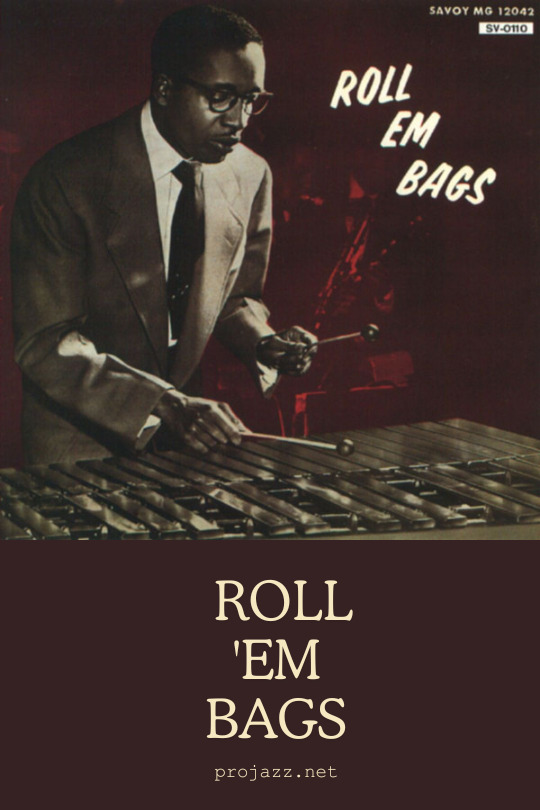
Milt Jackson – Roll ‘Em Bags
Roll ‘Em Bags is an album by American jazz vibraphonist Milt Jackson featuring performances recorded in 1949 and 1956 and released on the Savoy label.
Milt Jackson – vibes, piano
Kenny Dorham – trumpet
Julius Watkins – French horn
Billy Mitchell , Lucky Thompson – tenor saxophone
Wade Legge – piano
Wendell Marshall, Curly Russell – bass
Kenny Clarke – drums
Joe Harris – timbales
11 notes
·
View notes
Text

(62 YEARS AGO)
September 1, 1961 - John Coltrane: Africa/Brass is released.
# ALL THINGS MUSIC PLUS+ 4/5
# Allmusic 4.5/5
# Down Beat 2/5
Africa/Brass is the eighth studio album by John Coltrane, released on September 1, 1961.
Recorded:
May 23, 1961 and June 7, 1961, at RVG's Englewood Cliffs studio
Personnel:
John Coltrane – soprano and tenor saxophone
Booker Little – trumpet
Julius Watkins, Bob Northern, Donald Corrado, Robert Swisshelm – french horn
Bill Barber – tuba
Pat Patrick – baritone saxophone
McCoy Tyner – piano
Reggie Workman – bass
Elvin Jones – drums
__________
ORIGINAL LINER NOTES
John Coltrane is a quiet, powerfully-built young man who plays tenor saxophone quite unlike anyone in all of jazz. His style has been described as "sheets of sound" or as "flurries of melody." But, despite the accuracy, or lack of accuracy, of such descriptions, it is a fact that Coltrane's style is wholly original and of growing influence among new tenor players.
Perhaps he himself best described his dazzling style in a recent Down Beat article with writer Don DeMichael. "I started experimenting because I was trying for more individual development. I even tried the long, rapid lines that Ira Gitler termed 'sheets of sound' at the time. But actually, I was beginning to apply the three-to-one chord approach and at this time the tendency was to play the entire scale of each chord. Therefore, they were usually played fast and sometimes sounded like glisses."
Although Coltrane has absorbed this experiment into his present style and moved on, its effect was shocking, and intriguing, in the jazz world.
Most recently, as this album will attest, Coltrane has become absorbed by the rhythms of Africa. During the editing sessions for this album he noted, "There has been an influence of African rhythms in American jazz. It seems there are some things jazz can borrow harmonically, but I've been knocking myself out seeking something rhythmic. But nothing swings like 4/4. These implied rhythms give variety."
For this record, Coltrane composed two of the three selections, then discussed the orchestration thoroughly with Eric Dolphy, a reed player of enormous talent. Pianist McCoy Tyner of Coltrane's group was the third member of the discussion group.
"Actually," Dolphy recalled, "All I did was orchestrate. Basically John and McCoy worked out the whole thing. And it all came from John; he knew exactly what he wanted. And that was, essentially, the feeling of his group."
AFRICA has an unusual form. Its melody had to be stated in the background because Coltrane is not tied down by chords. "I had a sound that I wanted to hear," Coltrane remarked of this composition. "And what resulted was about it. I wanted the band to have a drone. We used two basses. The main line carries all the way through the tune. One bass plays almost all the way through. The other has rhythmic lines around it. Reggie and Art have worked together, and they know how to give and take." This work began with Coltrane's quartet. He listened to many African records for rhythmic inspiration. One had a bass line like a chant, and the group used it, working it into different tunes. In Los Angeles, John hit on using African rhythms instead of 4/4, and the work began to take shape. Tyner began to work chords into the structure, and, in John's own words, "it's been growing ever since."
The instrumentation--trumpet, four French horns, alto sax, baritone sax, two euphoniums, two basses, piano, drums, and tuba--is among the most unusual in jazz. But, Dolphy explained, "John thought of this sound. He wanted brass, he wanted baritone horns, he wanted that mellow sound and power."
Coltrane heard the playbacks and nodded. "It's the first time I've done any tune with that kind of rhythmic background. I've done things in 3/4 and 4/4. On the whole, I'm quite pleased with Africa."
GREEN SLEEVES is an updating of the old, revered folk song. It's included in this set because Coltrane, in recent months, has been studying folk music. "It's one of the most beautiful folk melodies I've heard," he said. "It's written in 6/8, and we do it just about as written. There's a section for improvisation with a vamp to blow on."
The quartet has been playing this theme recently, and the arrangement is based on Tyner's chords. Dolphy notated it. "For me," Coltrane said, "Greensleeves is the most enjoyable to play. Most of the time we get a nice pulse and groove. It was a challenge to add the band to it. I wanted to keep the feeling of the quartet. That's why we took the same voicings and the same rhythm McCoy comps in."
BLUES MINOR is a piece the quartet has been playing of late. It was assembled at the recording session. "It's a head," Dolphy said. "McCoy gave me the notes. I wrote out the parts, and the band did it on one take." It swings loosely with the ease and drive of a head arrangement.
All in all, this album is representative of the state of musical mind of John Coltrane, 34, on his way to something new and exciting, but pausing along the way to sum up the fresh and provocative work he has accomplished this far.
~ Dom Cerulli
TRACKS
Side one
1. Africa (Coltrane) – 16:28
Side two
1. Greensleeves (traditional, arranged by McCoy Tyner) – 10:00
2. Blues Minor (Coltrane) – 7:22
2 notes
·
View notes
Text
PROTO-LANGUAGE¹
By Patrick C. Ryan
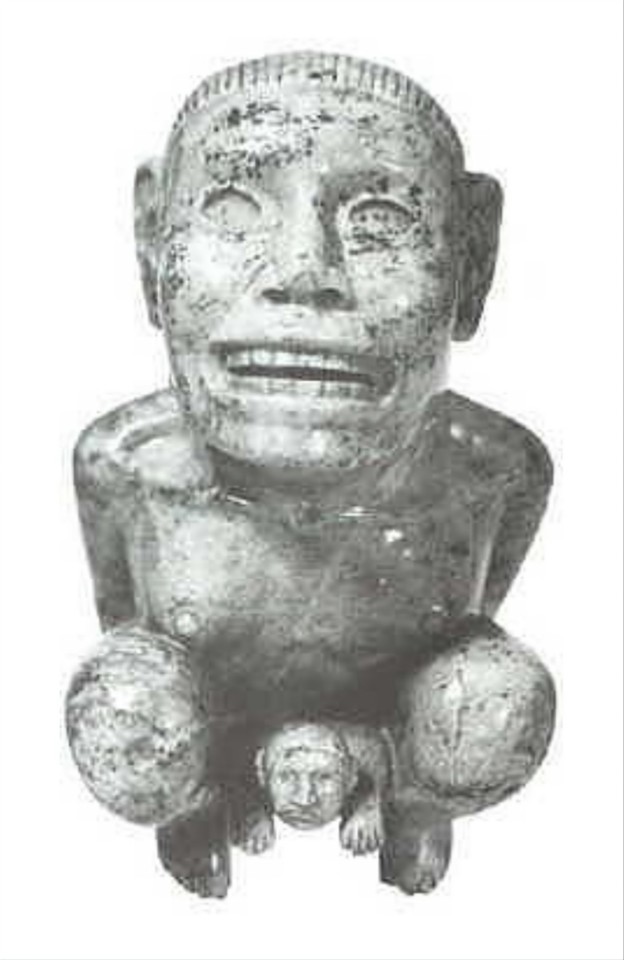

The Proto-Language is a hypothetically reconstructed language based on the
comparison of attested speech.
Press here to view essays on the Proto-Language.
https://www.mega.nu/protolanguage/ProtoLanguage-1.htm
The Proto-Religion is a hypothetically reconstructed religion based on the comparison of attested beliefs.
Press here to view essays on the Proto-Religion.
https://www.mega.nu/protolanguage/proto-religion/indexR.html
The Proto-Language was spoken by human beings at a time (100K BPE) before humanity dispersed from some central point over the earth (presumably Eastern Africa); and ethnic diversification began.
The underlying premise of these essays is that
ALL human languages derive from a single ancient source:
the Proto-Language.
Several files, which constitute short essays relating specific languages and language families to the Proto-Language and Indo-European are available for viewing or download as regular .HTM(L) files.
The Indo-European entries in some of the essays have been given without English glosses to encourage readers to fully explore the semantic ranges contained under entries for the roots in dictionaries like
Pokorny, Julius. 1959. Indogermanisches Etymologisches Wörterbuch
For casually interested readers, an excellent and inexpensive source of valuable information is:
Morris, William (ed.). 1992. The American Heritage Dictionary of the English Language. Indo-European and the Indo-Europeans by Calvert Watkins (pp. 1496-1502); Indo-European Roots (pp. 1505-1550). Boston: Houghton Mifflin Company, which can be easily purchased (for $31.50 + shipping) from Amazon.com by simply pressing on the icon to the left.
Indo-European cognates are cited to demonstrate that even though intermediate proto-languages may not yet have been reconstructed (and taxonomies elaborated), (proto-)languages that are currently considered to be unrelated can be shown to ultimately be related when both are viewed in the context of the Proto-Language.
Indo-European roots therefore are intended as a control to demonstrate that the reconstructed Proto-Language roots have not been "designed" to correlate only with the vocabulary of the language(-family) under investigation.
Indo-European citations are not intended to suggest a closer genetic relationship of the language(-family) under discussion with Indo-European than with any other language(-family)!
This is a controversial theory that is not accepted by most experts — at least, at the present time.
The major objection is:
that a "proto-language" cannot be reconstructed.
Because of observed rates of vocabulary loss in historical languages (lexico-statistics), present-day languages 'should have been unable to retain' earlier vocabulary items because of the involved long periods of time (during which, presumably, vocabulary loss occurred at a rate similar to that observed historically), an inference from glottochronology. R. L. Trask has addressed related misuses of glotto-chronology and lexico-statistics.
A concept which is useful here is punctuated equilibrium, which suggests that long periods of "no change", punctuated by short periods of "radical change".
Some linguists have made invalid inferences from "modern" circumstances that exclude a priori the possibility of ancient language reconstruction. A. Vovin has discussed related issues. In my opinion, ethnic and linguistic stability in pre-agricultural societies did not permit the dramatic rate of vocabulary replacement observed more recently.
The proof is in the Comparison Studies presented below. If these studies are able to show cognates among languages now considered to be unrelated --- displaying regular sound and semantic correspondences, theoretical objections must retreat before plainly demonstrated facts.
The reader will be the judge of whether the Comparison Studies have, indeed, accomplished those objectives.
Any critique, positive or negative, will be welcomed.
To validate this theory will take the collaboration of experts from many linguistic backgrounds to reconstruct the taxonomy and intermediate proto-languages, which will ratify the conclusions reached from language-to-language comparison.
Files on Afrasian (Egyptian and Arabic), Altaic, Basque, Beng (Southern Mandé), Japanese, Mon/Hmong, (Sino-)Tibetan, Sumerian, and Uralic are accessible below, I have completed similar essays on Hurrian, and Nama (Khoisan); they will be added as they are converted to .HTM(L) format. Studies that have been begun preliminarily include Blackfoot (Algonquian), Mayan and Hunzib (Tsezic-Daghestan-East Caucasian).
I am hoping that others will want to collaborate in this effort with essays on (proto-)languages in their individual fields of study.
Patrick C. Ryan
view (or download)
AFRASIAN COMPARISON Table(.HTM)
https://www.mega.nu/protolanguage/comparison.AFRASIAN.3_table.htm
ALTAIC COMPARISON(.HTM)
https://www.mega.nu/protolanguage/comparison.ALTAIC.8.htm
BASQUE COMPARISON(.HTM)
https://www.mega.nu/protolanguage/comparison.BASQUE.4.htm
BENG (Southern Mandé) COMPARISON(.HTM)
https://www.mega.nu/protolanguage/comparison.BENG.1.htm
BLACKFOOT (Algonquian) COMPARISON(.HTM)
https://www.mega.nu/protolanguage/comparison.BLACKFOOT.11.htm
JAPANESE COMPARISON(.HTM)
https://www.mega.nu/protolanguage/comparison.JAPANESE.2.htm
draft MON/HMONG COMPARISON(.HTM)
https://www.mega.nu/protolanguage/comparison.MON-HMONG.6_table.htm
PAMA-NYUNGAN COMPARISON(.HTM) (based on available materials)
https://www.mega.nu/protolanguage/comparison.PAMA-NYUNGAN.12.htm
(SINO-)TIBETAN COMPARISON(.HTM)
https://www.mega.nu/protolanguage/comparison.SINO-TIBETAN.10.htm
SUMERIAN COMPARISON Table(.HTM)
https://www.mega.nu/protolanguage/comparison.SUMERIAN.5_table.htm
URALIC COMPARISON(.HTM)
https://www.mega.nu/protolanguage/comparison.URALIC.7.htm
THE PROTO-LANGUAGE(.HTM) [5 essays]
https://www.mega.nu/protolanguage/ProtoLanguage-1.htm
PROTO-LANGUAGE MONOSYLLABLES(.HTM)
https://www.mega.nu/protolanguage/ProtoLanguage-Monosyllables.htm
PROTO-LANGUAGE PRIMER(.HTM)
https://www.mega.nu/protolanguage/ProtoLanguage-Primer.htm
TIMETABLE OF PROTO-LANGUAGE EVOLUTION(.HTM)
https://www.mega.nu/protolanguage/ProtoLanguage-Timetable.htm
IE CORRESPONDENCE TABLE {with the principal IE-derived language families}(.HTM)
https://www.mega.nu/protolanguage/IECorrespondenceTable.htm
For examples of these comparative principles applied to
current linguistic problems, you might like to . . .
view (or download)
A Slightly Different View of sDm.f(essay-sDm.f.HTM)
https://www.mega.nu/protolanguage/essay-sDm.f.htm
Coptic Vocalism([One/Two/Three].HTM)
https://www.mega.nu/protolanguage/Coptic_Vocalism_One.htm
Earlier Essays
Pre-Nostratic Pronouns - Early Noun Substitutions (Mother Tongue 11, September 1990)(PERSPRO1.HTM)
https://www.mega.nu/protolanguage/PERSPRO1.htm
Proto-Language "He" and "It" - IE -l/-n Nouns (Dhumbadji! Vol. 1, No. 4; Winter 1994)(PERSPRO3A/B.HTM)
https://www.mega.nu/protolanguage/PERSPRO1.htm
Review of Alexis Manaster-Ramer's Some Borrowed Numerals in Proto-Kartvelian (Dhumbadji! Vol. 2, No. 3, December 1995) Review: Dhumbadji! Vol. 3, No. 1, Summer 1996 (critique-PKNumerals.HTM)
https://www.mega.nu/protolanguage/critique-PKNumerals.htm
Sign My Guestbook ?
Guestbook by Lpage
please let me know if these essays on the Proto-Language and the derived languages are of interest
May I have your comments?
the latest revision of this document can be found at
HTTP://WWW.GEOCITIES.COM/Athens/Forum/2803/index.html
Patrick C. Ryan * 9115 West 34th Street - Little Rock, AR 72204-4441* (501)227-9947
1. "The hypothesis of the monogenesis of language is one that most linguists believe to be plausible. Indeed, the appearance of language may define modern Homo sapiens." Philip E. Ross (Staff writer) in "Hard Words", pp. 138-147, SCIENTIFIC AMERICAN, April 1991.
1 note
·
View note
Text
The Creator Has a Master Plan (RIP Pharoah Sanders)
Pharoah Sanders (born Farrell Sanders; October 13, 1940 – September 24, 2022) was an American jazz saxophonist. A member of John Coltrane's groups of the mid-1960s, Sanders was known for his overblowing, harmonic, and multiphonic techniques on the saxophone, as well as his use of "sheets of sound". He released over 30 albums as a leader and collaborated extensively with many other musicians.
An only child, Sanders began his musical career accompanying church hymns on drums, then clarinet.
https://en.wikipedia.org/wiki/Pharoah_Sanders
Sanders had one of his biggest hits with a 1969 LP . The album's main piece is the 32-minute-long "The Creator Has a Master Plan", co-composed by Sanders with vocalist Leon Thomas.
youtube
+++
The song features Sanders on tenor sax, along with two of his most important collaborators, the aforementioned Leon Thomas and pianist Lonnie Liston Smith, as well as a supporting cast of musicians who were major musicians in their own right: flautist James Spaulding; French-horn player Julius Watkins; bassist Reggie Workman, who had played with Coltrane earlier in the 1960s; second bassist Richard Davis; drummer Billy Hart, and percussionist Nathaniel Bettis.
Despite its length, it achieved mainstream FM radio airplay, surely the closest the avant-garde movement came to a "hit."
https://en.wikipedia.org/wiki/Karma_(Pharoah_Sanders_album)
Read an informative interview with Sanders from 2020 at https://www.newyorker.com/culture/the-new-yorker-interview/if-youre-in-the-song-keep-on-playing-pharoah-sanders-interview
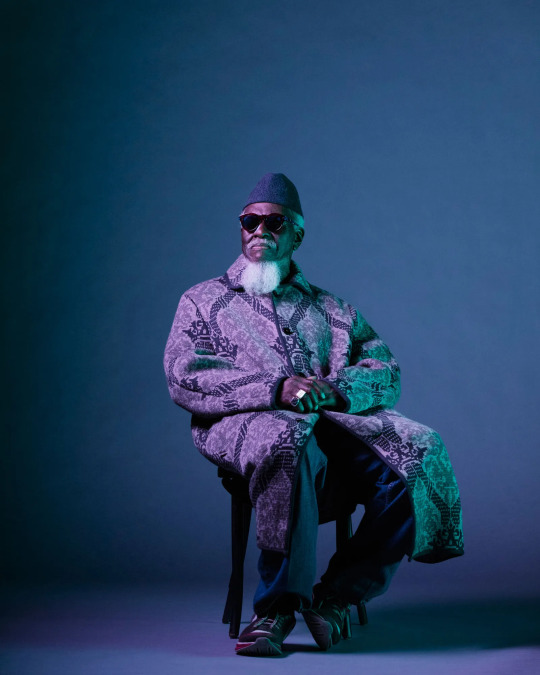
+++
The song has been covered by many artists. Here is Louis Armstrong’s part from his 1970 recording of “The Creator Has a Master Plan”.
youtube
+++
The lead sheet for Louis' version:

0 notes
Video
youtube
Gerald Clayton on Monk
Friday the 13th
Thelonious Monk
Sonny Rollins – sax
Julius Watkins – french horn
Thelonious Monk – piano
Percy Heath – bass
Willie Jones – drums
#Friday the 13th#Gerald Clayton#Sonny Rollins#Julius Watkins#Percy Heath#Willie Jones#Thelonious Monk
9 notes
·
View notes
Text
JazzX5#386. John Coltrane: "Greensleeves" [Africa/Brass (Impulse!, 1961)] [Minipodcast de jazz aka Malditos Jazztardos] Por Pachi Tapiz
JazzX5#386. John Coltrane: “Greensleeves” [Africa/Brass (Impulse!, 1961)] [Minipodcast de jazz aka Malditos Jazztardos] Por Pachi Tapiz
“Greensleeves”
John Coltrane: Africa/Brass (Impulse!, 1961)
John Coltrane, Booker Little, Julius Watkins, Bob Northern, Donald Corrado, Robert Swisshelm, Bill Barber, Pat Patrick, McCoy Tyner, Reggie Workman, Elvin Jones, Freddie Hubbard, Julian Priester, Charles Greenlee, Jim Buffington, Garvin Bushell. La orquestación fue obra de McCoy Tyner y Eric Dolphy.
Tomajazz: © Pachi Tapiz, 2022
¿Sabías…
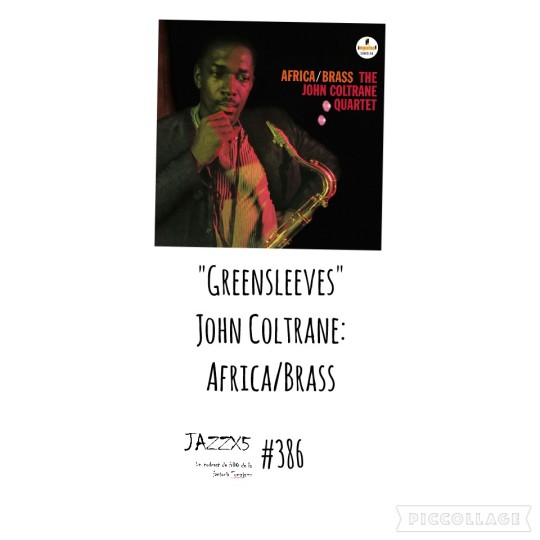
View On WordPress
#Bill Barber#Bob Northern#Booker Little#Charles Greenlee#Donald Corrado#elvin jones#Eric Dolphy#Freddie Hubbard#Garvin Bushell#Impulse!#Jim Buffington#john coltrane#Julian Priester#Julius Watkins#mccoy tyner#Pat Patrick#Reggie Workman#Robert Swisshelm
0 notes
Photo

Quincy Jones: Big Band Bossa Nova
WaxTime 771836, 2013
Originally released: 1962
#meine photos#vinylcollection#1962 music#quincy jones#vinylcommunity#phil woods#paul gonsalves#roland kirk#jerome richardson#clark terry#julius watkins#alan raph#lalo schifrin#jim hall#chris white#rudy collins#jack del rio#carlos gomez#jose paula
1 note
·
View note
Text

Jimmy Heath – The Quota
The Quota is the third album by saxophonist Jimmy Heath featuring performances recorded in 1961 originally released on the Riverside label.
Stephen Cook of AllMusic says, “Jimmy Heath’s considerable talents are very evident on this fine hard bop title… The Quota’s strong material, tight arrangements, and thoughtful solos help make this Heath title one of the better hard bop releases available and a must for any jazz collection”.
Jimmy Heath – tenor saxophone
Freddie Hubbard – trumpet
Julius Watkins – French horn
Cedar Walton – piano
Percy Heath – bass
Albert Heath – drums
3 notes
·
View notes
Photo


I feel like a lot of people just have a problem with this show,” Andrew Rannells says, who stars as Larry, a bratty and rebellious man who’s a constant headache for his boyfriend, Hank. However, he thinks that might have more to do with the viewer than the work. “I think it can be looked at as a rather bleak depiction of what your life as a homosexual would be like. I think it got a bad reputation for a while. But I hope that this revival is at least in some way showing that it's actually funnier than people give it credit for, there’s more love between those characters than people remember.” We also have the benefit of new context, 50 years later. “It's not a representation of every gay person. It's a representation of nine people on this one night. At the time, it was a symbol for all gay people. It doesn't have to be.”
Andrew Rannells for GQ.
#andrew rannells#the boys in the band#boys in the band#wallpaper#jim parsons#matt bomer#zachary quinto#charlie carver#robin de jesus#michael benjamin washington#tuc watkins#brian hutchison#gq#photoshoot#gay#pride#julius#gay bar#gqmagazine#phone wallpaper#magazine
38 notes
·
View notes
Photo

NILØS EMPTYSET / CAMPAIGN
3 notes
·
View notes
Text
Black Folklore Resource.
I’ve been thinking and researching a lot about the (Black) Southern Gothic style/aesthetic and African American folklore, so I put together a list of books for myself and thought it might be helpful to someone else.
-;-;-
FOLKTALE COLLECTIONS
The People Could Fly: American Black Folktales by Virginia Hamilton | Thrift Books Amazon
Her Stories: African American Folktales, Fairy Tales, and True Tales by Virginia Hamilton | Amazon
Mules and Men by Zora Neale Hurston | Amazon Thrift Books
Every Tongue Got to Confess : Negro Folk-Tales from the Gulf States by Zora Neale Hurston | Thrift Books Amazon
Go Gator and Muddy the Water : Writings by Zora Neale Hurston from the Federal Writers Project by Zora Neale Hurston | Thrift Books Amazon
Lies and Other Tall Tales by Zora Neale Hurston and Joyce Carol Thomas | Thrift Books Amazon
FOLKLORE AND STORYTELLING
Black Culture and Black Consciousness: Afro-American Folk Thought from Slavery to Freedom by Lawrence W. Levine | Thrift Books
Shuckin’ and Jivin’: Folklore from Contemporary Black Americans | Thrift Books Amazon
A Treasury of Afro-American Folklore: The Oral Literature, Traditions, Recollections, Legends, Tales, Songs, Religious Beliefs, Customs, Sayings and Humor of Peoples of African American Descent in the Americas by Harold Courlander | Amazon
The Grey Album: On the Blackness of Blackness by Kevin Young | Amazon
Talk That Talk: An Anthology on African-American Storytelling by Linda Goss | Amazon
African American Folktales: Stories from Black Traditions in the New World by Roger Abrahams | Amazon
Deep Down in the Jungle: Black American Folklore from the Streets of Philadelphia by Roger Abrahams | Amazon
Singing the Master : The Emergence of African-American Culture in the Plantation South by Roger D. Abrahams | Thrift Books Amazon
From Trickster to Badman: The Black Folk Hero in Slavery and Freedom by John W. Roberts | Amazon
Black Folklore and the Politics of Racial Representation by Shirley Moody-Turner | Amazon
Black Folktales by Julius Lester | Amazon
Folk beliefs of the southern Negro (1926) by Newbell Niles Pucket | Amazon
Black Folklore and the Politics of Racial Representation by Shirley Moody-Turner | Amazon
HUMOR
African American Humor: The Best Black Comedy from Slavery to Today (The Library of Black America series) by Mel Watkins, Dick Gregory | Amazon
Honey, Hush!: An Anthology of African American Women's Humor by Daryl Cumber Dance, Nikki Giovanni | Amazon
STYLE
The Birth of Cool: Style Narratives of the African Diaspora by Carol Tulloch | Amazon
Black Cool: One Thousand Streams of Blackness by Rebecca Walker, Henry Louis Gates Jr. | Amazon
MAGIC/MYSTICISM
African American Female Mysticism: Nineteenth-Century Religious Activism by Joy R. Bostic | Amazon
Working Conjure: A Guide to Hoodoo Folk Magic by Hoodoo Sen Moise | Amazon
Black Magic: Religion and the African American Conjuring Tradition by Ifalaye Books | Amazon
FOLK HEALING
Working the Roots: Over 400 Years of Traditional African American Healing by Michele Elizabeth Lee | Amazon
African American Slave Medicine: Herbal and nonHerbal Treatments by Herbert C. Cove | Amazon
African American Folk Healing by Stephanie Mitchem | Amazon
ADDITIONS: 7/27/2019
(NOTE: As I continue to add books, some of these may deviate from folklore and focus on Black history and/or Black experiences)
Fiction and Folklore: The Novels of Toni Morrison by Trudier Harris | Thriftbooks Amazon
The Skull Talks Back: And Other Haunting Tales by Joyce Carol Thomas & Zora Neale Hurston | Thriftbooks Amazon
Passed On: African-American Mourning Stories by Karla FC Holloway | Thriftbooks Amazon
Black Bodies and the Black Church: A Blues Slant by Kelly Brown Douglas | Amazon
This is absolutely not a definitive list and if you have more information or recommendations please feel free to add it!
#american folklore#african american folklore#folklore#black folklore#african american folktales#black folktales#folktales#african american humor
9K notes
·
View notes
Text
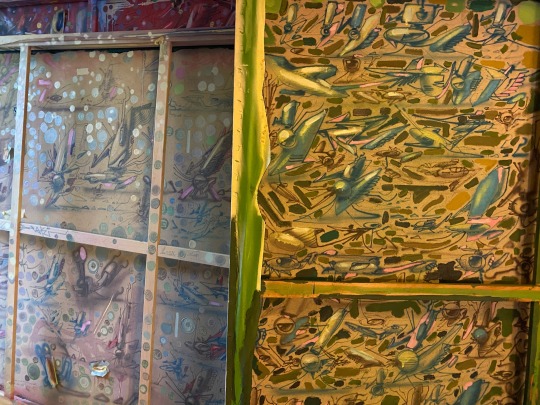
My painting process: switching from different you tube channels (like: @alpha_male_s , @rational_male, @rsdtyler, @klausthiele.io, @peterfrahmcoaching , @entrepreneurs_in_cars, @david_deangelo, @realrossjeffries, @mattcrossofficial, @coachgregadamstv, @madisonhimself, @fitxfearless , @red.pilled.rican , @toddvdating , @eckharttolle, @coachcoreywayne, @thefuturishere, @better_bachelor, @stephiscold, @kevinsamuels_ , @human_oninsta , @book_of_alpharonomy, @johnanthonylifestyle , @bodoschaefer, @RyanStone, @julienhimself @bosana.s, listening to while painting.
Sometimes just live for escaping with in to painting while listening to a certain audiobook series. ( examples: Jack Reacher (lee child/ Andrew child @leechildreacher ), Sharpe ( Bernard Cornwell) ), Jack Ryan ( Tom Clancy ),Julius Eichendorf/ In Vino Veritas (Sebastian Henn @carsten.henn / We both became honored with the same cultural Award (Kulturpreis)), Decius Caecilius Metellus / SPQR ( John Maddox Roberts ), Pekkala/ The Smaragd Eye ( Sam Eastland/ Paul Watkins ), @jamesleeburke, the oeuvre of @robertgreeneofficial , J.l. Bourne Zombie Apocalypse Diaries Series, Don Winslow’s audiobooks , Roberto Saviano’s „ Zero Zero Zero „, Harry Flashman ( Georg MacDonald Fraser ), Michael Crichton, Sven Hassel’s ww2 comical fiction, @heinzstrunk, John Grisham, Maxwell Maltz, Jonathan Littell, @daviddeida.live , @benjamin_von_stuckrad_barre , @verafbirkenbihl , @thebriantracy , @napoleonhillofflcial , etc.
I most of the time listen to audio while painting. Being it fiction/ being it useful/ selfdevelopment/ broading skill set content. I started listening to selfhelp/ pua stuff ( pre the game book/ via@bit torrent) around 2000. Since my childhood I like listening while painting ( Playing )
#SEAK #ClausWinkler #workprocess #Kunst #paintings #stylewriting #fatcap #throwies #newcontemporary #artcollect #Stylewriting #postcontemporary #artinvest #artiststudiolife #artprocess #Contemporarypaintings #paintingnow #germanart #arte #collectart #cwinkler #artmarket #Modernartists #abstractart #contemporaryartgallery #abstractpainters #kunstaustellung #artinvestments #Kunst #SEAKClausWinkler
#seak#clauswinkler#kunst#seakclauswinkler#künstler#artist#contemporaryart#art#cwinkler#clausseakwinkler
2 notes
·
View notes
Video
youtube
Soul Bossa Nova ♫ Quincy Jones And His Orchestra ♫
Released on: 1962-01-01
Producer, Conductor, Associated Performer, Recording Arranger: Quincy Jones
Associated Performer, Alto Saxophone: Phil Woods
Associated Performer, Tenor Saxophone: Paul Gonsalves
Associated Performer, Flute, Alto Flute: Roland Kirk
Associated Performer, Flute, Alto Flute, Woodwinds: Jerome Richardson
Associated Performer, Trumpet, Flugelhorn: Clark Terry
Associated Performer, French Horn: Julius Watkins
Associated Performer, Bass Trombone: Alan Raph
Associated Performer, Piano: Lalo Schifrin
Associated Performer, Guitar: Jim Hall
Associated Performer, Bass Guitar: Chris White
Associated Performer, Drums: Rudy Collins
Associated Performer, Percussion: Jack Del Rio
Associated Performer, Percussion: Carlos Gomez
Associated Performer, Percussion: Jose Paula
Composer Lyricist: Quincy Jones
1 note
·
View note